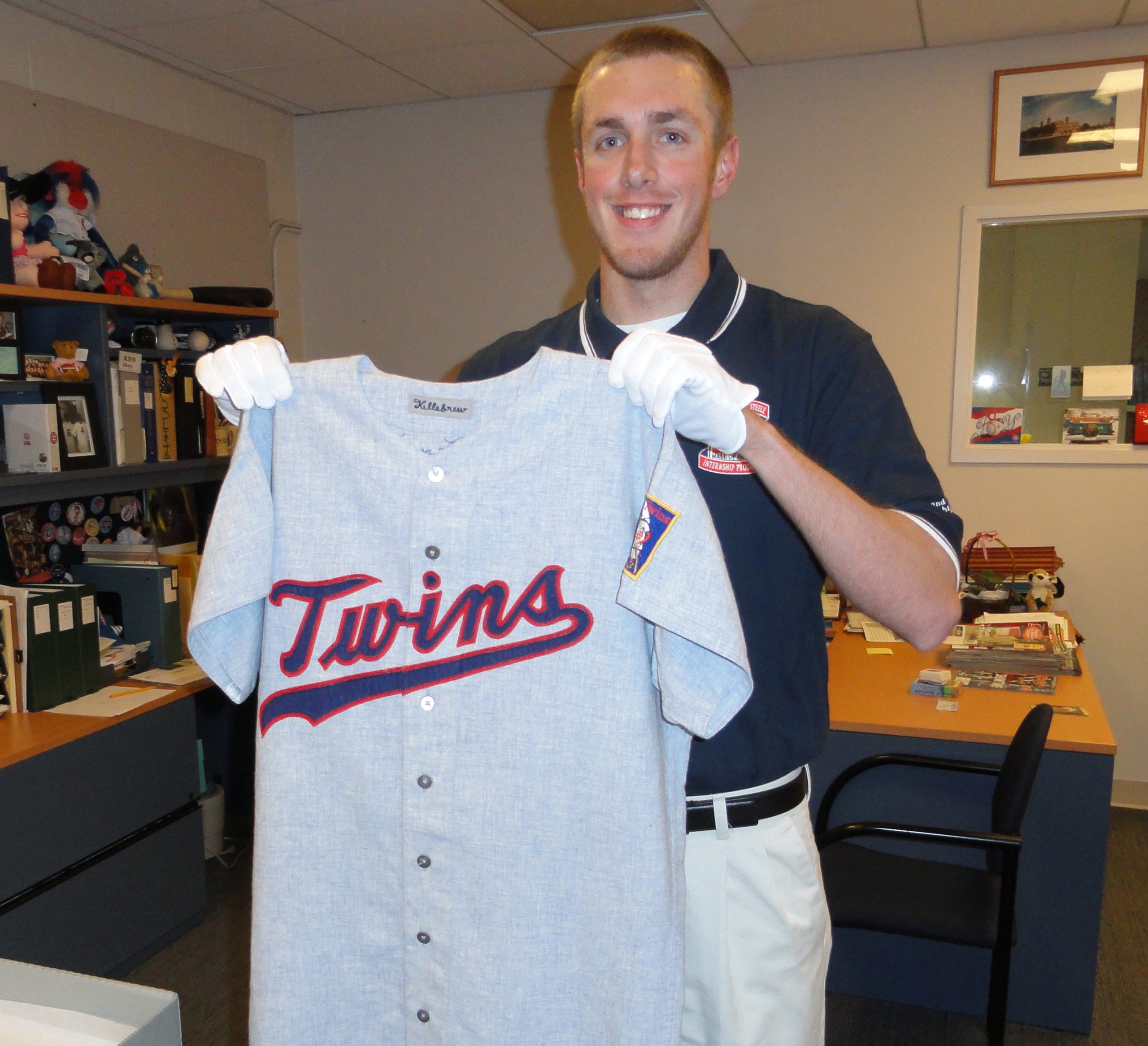I’ve been a self-described baseball fanatic for almost a decade. After all of the games I’d seen and people in baseball I’d met, I didn’t think that I could possibly do much else relating to the national pastime that I hadn’t already done. It’s funny how 10 weeks in baseball paradise will change your mind so quickly.
I received my call from the National Baseball Hall of Fame as my junior year at Gustavus came to a close. I had applied for a multi-media internship at the Hall of Fame, and after proving my passion for the game in an hour-long interview and being offered the position, I began preparing for the experience of a lifetime.
My trip to Cooperstown, New York began with a run-in with my past. I experienced my beginnings as a baseball fanatic back in the summer of 1998 as I watched Mark McGwire shatter Roger Maris’s single season home run record. As chance would have it, I ran into McGwire at Wrigley Field and told him about my upcoming internship and his influence on my passion for baseball. He gave me a smile as he told me how excited for me he was and thanked me for my support.
Within the first week at the Hall of Fame, I was producing a video for the museum’s “Today’s Game” exhibit. Each week I took the video highlights that MLB sent to us and condensed them into a five minute compilation of the best plays of the week. It was a huge thrill to see my work on display for everyone in the museum to enjoy.
After my first week of work, my supervisor walked me down the hall to the collections office where incoming artifacts and items set aside for educational programming resided. My eyes went wide as he opened a white box in the middle of the room. Inside rested a vintage Minnesota Twins jersey from the 1960s that had belonged to Harmon Killebrew. This was my first personal encounter with the museum’s artifacts, but it surely wasn’t my last.
As I walked down to my office each morning, I glanced into the collections office in hopes of catching a glimpse of baseball history. As luck would have it, I got to see artifacts relating to the season’s biggest stories, such as the cap worn in phenom Stephen Strasburg’s debut, the base from the controversial play that kept Armando Galarraga from perfection, and game-worn caps from a pair of the season’s many no-hitters.
The first major event of the summer put on by the museum was the Hall of Fame Classic, which featured a legends game and a skills clinic. During the course of the weekend, I was able to interview the likes of Harmon Killebrew and Jeff Kent, while meeting half a dozen members of the Hall of Fame.
Although most of my workdays revolved around baseball, I spent my off-days examining every square inch of the museum’s exhibits and traveling to see baseball games. I made a weekend trip to Washington D.C. and Philadelphia to see a couple baseball games and also saw one of the Twins’ minor league affiliates play in Rochester, Minn.
Over the course of the summer, I saw games in eight different ballparks, but the one of most significance to me was Old Timers’ Day at Yankee Stadium. As I entered the ballpark, it signaled the end of my quest to see all 30 current MLB ballparks; a feat which I had always aspired to do before I graduated from Gustavus.
The entire summer built up to Hall of Fame induction weekend, in which Andre Dawson, Whitey Herzog and Doug Harvey were officially enshrined into the Hall of Fame. Perhaps the biggest thrill of my entire summer came when I was able to stand in the lobby of the hotel where the Hall of Famers checked in. I stared in disbelief as Tom Seaver and Bob Gibson chatted casually just feet away from where I stood, and other legends of the game did likewise.
As the internship wound to a close, I found myself wishing that it wouldn’t end. On my last day of work, I got the chance to live every baseball fan’s dream: I received a guided tour of the museum’s collection of artifacts. The baseball historian in me lit up as I held Babe Ruth’s bat and Lou Gehrig’s cap.
My favorite artifact came toward the end of the tour, when I was handed the bat that Mark McGwire used to hit his last five homers of the 1998 season. As I held that sacred bat in my hands, I appreciated the fact that I had come full circle as a baseball fan. After years of following the sport with a burning passion, I was now holding the iconic piece of lumber that had lured me to baseball in the first place.
I stepped out of the vault in complete disbelief at what I had just seen and was immediately dealt another mind-numbing opportunity. From the beginning of my internship, the collections department had shown an interest in the shoes I had received as an usher for the Twins. The assistant registrar stood at her desk with a pen and paper in front of me, waiting for me to sign my shoes over to the museum.
While I no longer have that pair of Twins shoes, I can rest assured knowing that they are now property of the National Baseball Hall of Fame. Never in my wildest dreams could I have foreseen the memories I would create in baseball’s promised land, or that my shoes would become a part of the greatest collection of baseball artifacts in the world.
